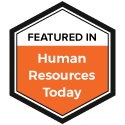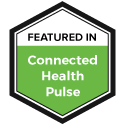3 minute read:
President Joe Biden recently signed into law the American Rescue Plan (ARP) and it includes provisions that make ACA healthcare coverage more accessible to Americans.
The $1.9 trillion rescue plan reduces significant barriers in obtaining healthcare through state and federal healthcare exchanges by reducing premium costs and making coverage more affordable for Americans, regardless of income. For the 2021 and 2022 tax years, Americans will now be able to qualify for Premium Tax Credits (PTCs) and overall subsidized healthcare with much more ease due to the expansion of income thresholds around the Federal Poverty Level (FPL).
Under the ARP, Americans with income up to 150% of the FPL can obtain silver quality health plans for $0 monthly premiums and significantly reduced deductibles. Also, Americans who earn higher incomes, 400% or above, can now qualify for subsidized healthcare. Previously, individuals with income above 400% of the FPL were not eligible to receive subsidized healthcare from a state or federal health exchange.
According to a recent post by the Kaiser Family Foundation (KFF), prior to the ARP, “marketplace premium subsidies were partial; no matter how poor, people had to contribute something toward the cost of the benchmark silver plan (i.e., the second lowest cost silver plan in their area). Those with income at 100% FPL had to contribute 2.07% of household income ($264 per year in 2021) toward a benchmark plan; at 150% FPL that amount increased to 4.14% of household income( $792 per year).”
As a result of the ARP, the maximum contribution towards the benchmark healthcare option will be “no more than 8.5% of household income.”
According to CMS’ ARP fact sheet, “Premiums after these new savings will decrease, on average, by $50 per person per month or by $85 per policy per month. Four out of five enrollees will be able to find a plan for $10 or less/month after premium tax credits, and over 50% will be able to find a Silver plan for $10 or less.”
In addition to expanding the pool of Americans that can qualify for subsidized healthcare, the ARP also waives repayment of excess PTCs that Americans may have received from a federal or state health exchange during the 2020 tax year.
While the affordability threshold for Americans opting for health insurance on a health exchange has been reduced, the ARP has also allowed new individuals the option to obtain coverage, including individuals receiving unemployment benefits and COBRA recipients.
For COBRA recipients, under certain circumstances, the ARP allows for temporary premium subsidies for the 2021 tax year. For up to six months, Americans can receive 100% of the monthly subsidy paid for, so long as they still qualify for COBRA. A report by KFF says, “the law requires the former employer to pay the COBRA premium for subsidy-eligible individuals; the federal government will then reimburse the former employer for this cost.”
Changes to Premium Tax Credit affordability thresholds apply to the 2021 and 2020 tax years and go into effect on April 1, 2021. For more information on the changes to COBRA or PTC qualifications, read the full act text.
Enhancements to the ACA are long overdue, and with President Biden in office, this trend is likely to continue. Employers should be mindful of these recent changes to PTCs because if one of their employees receives one, it could result in the IRS issuing your business an ACA penalty assessment for failing to comply with the healthcare law’s Employer Mandate.
Under the ACA’s Employer Mandate, Applicable Large Employers (ALEs), employers with 50 or more full-time employees and full-time-equivalent employees, are required to offer Minimum Essential Coverage (MEC) to at least 95% of their full-time workforce (and their dependents) whereby such coverage meets Minimum Value (MV) and is affordable for the employee, or be subject to Internal Revenue Code (IRC) Section 4980H penalties.
With more Americans qualifying for PTCs on state and federal health exchanges, employers will need to be sure their ACA compliance process is proficient, as the onus for demonstrating an employee should not have received the subsidy will be on the employer. The Treasury Inspector General for Tax Administration (TIGTA) provides independent feedback to the IRS about its activities and recently issued a report that found 27.4% of Premium Tax Credits are improper payments.
As more nuances around the ACA continue, best practices suggest outsourcing for ACA compliance to help you prepare your audit defense, in addition to monthly monitoring and annual filing with the IRS.
Download our guide; 5 Common ACA Compliance Mistakes to help you evaluate your current process and identify ACA compliance areas that you can improve upon.






